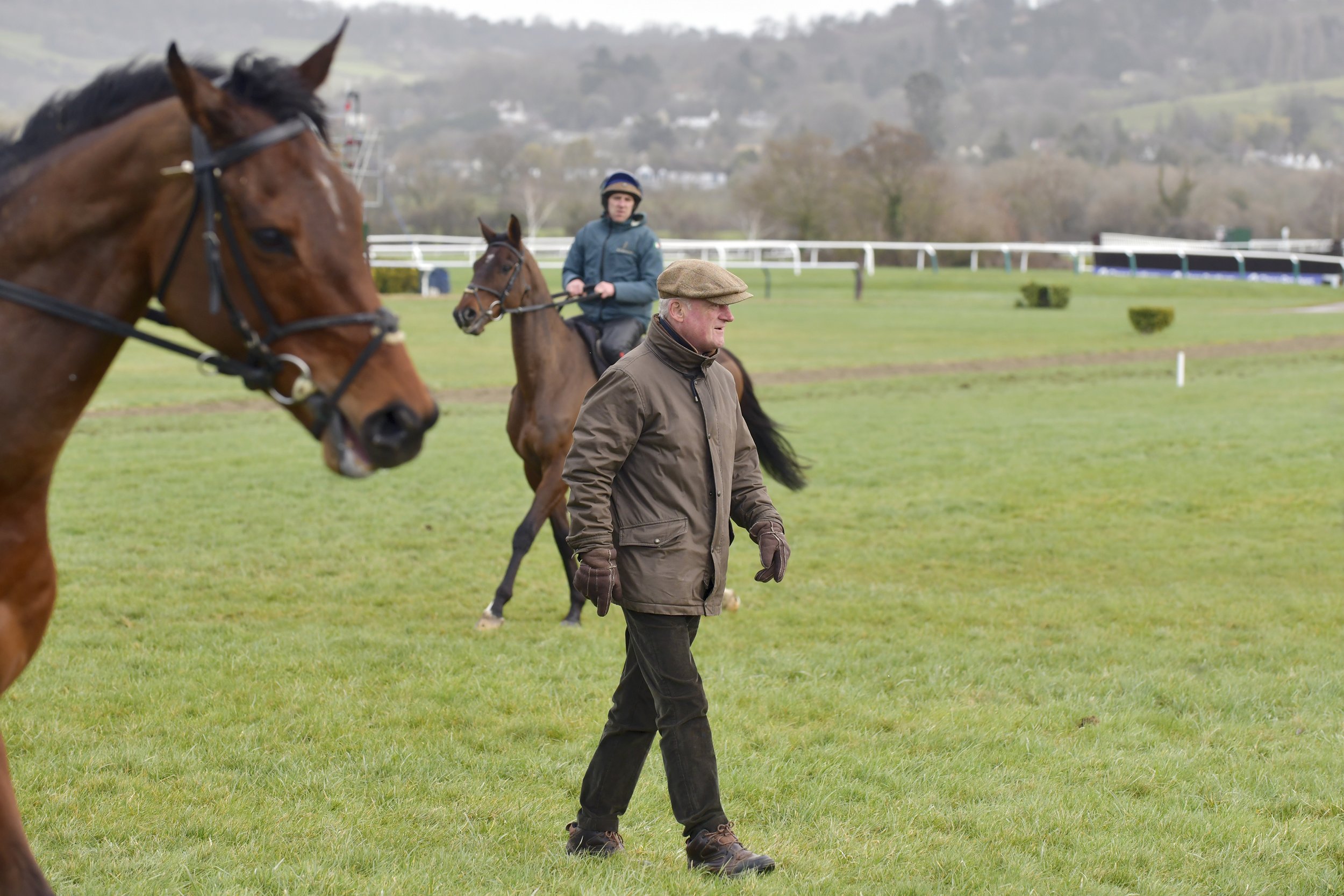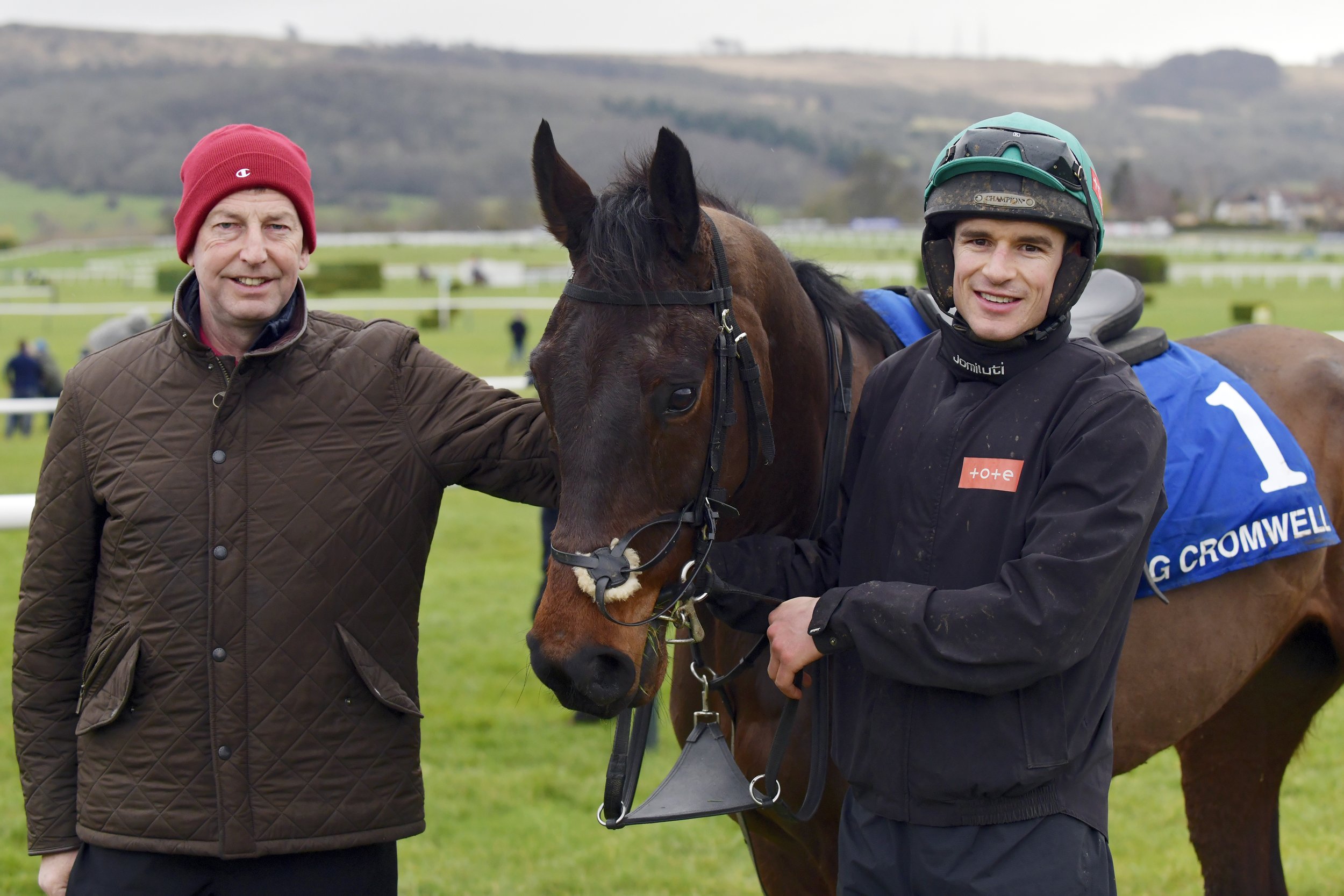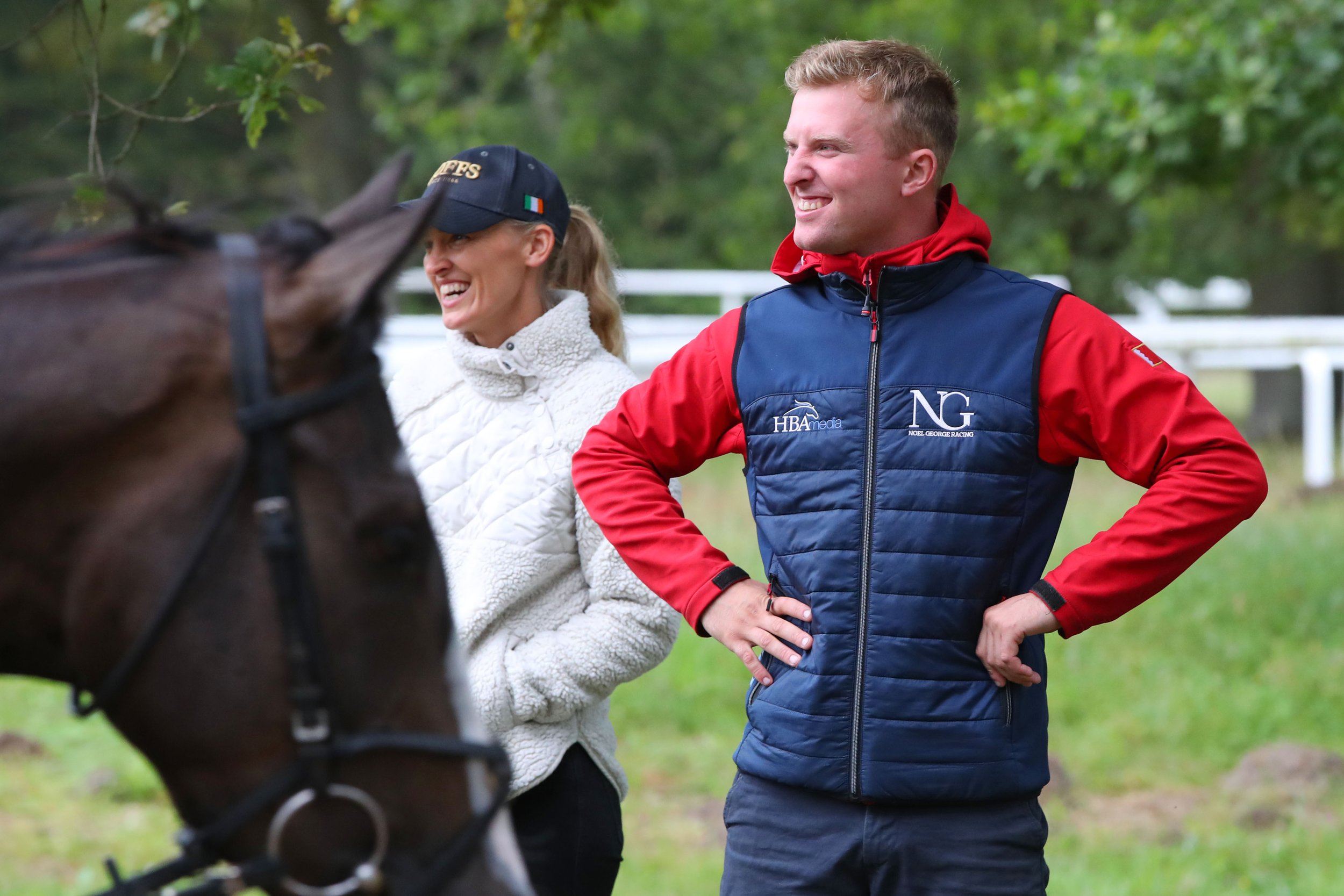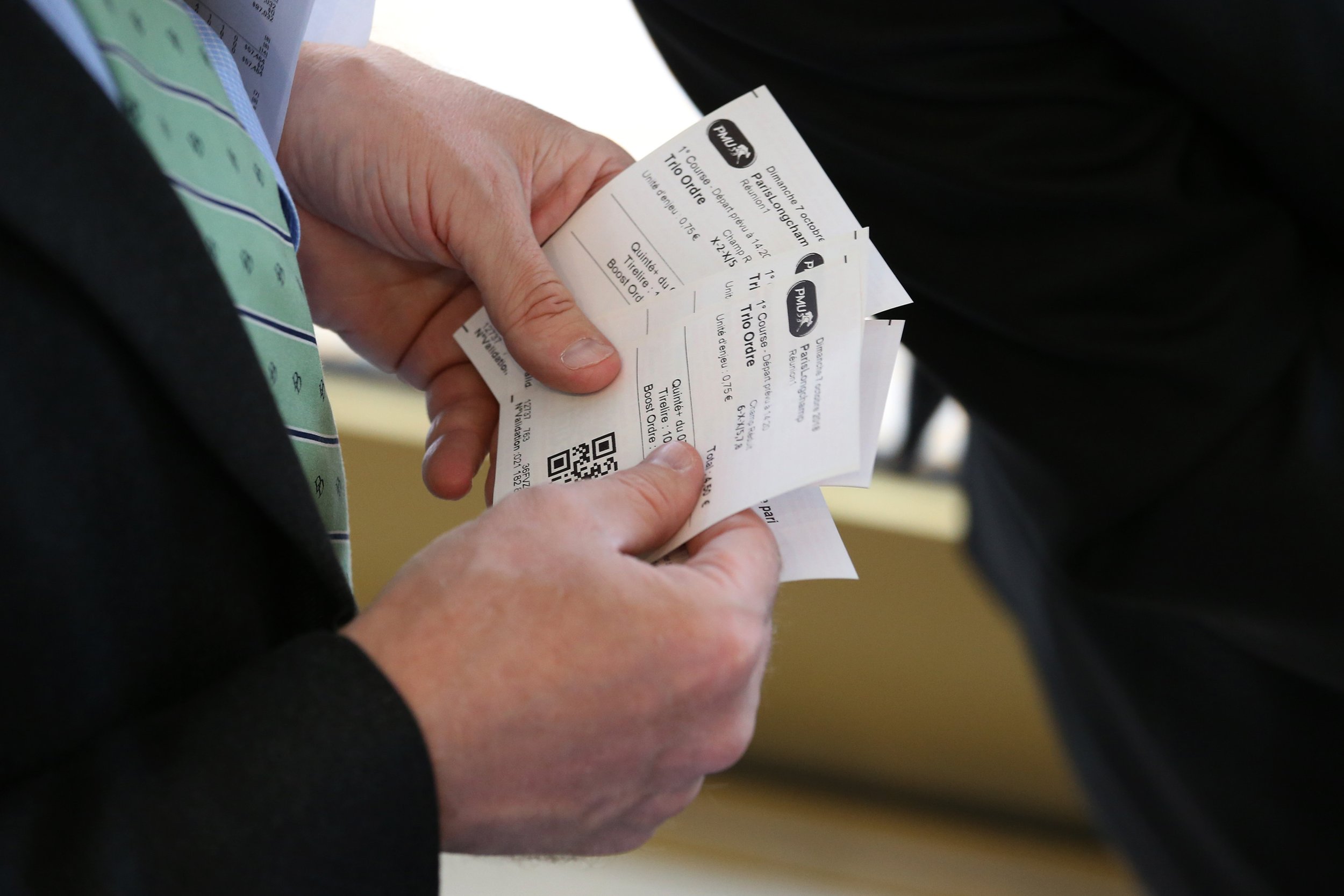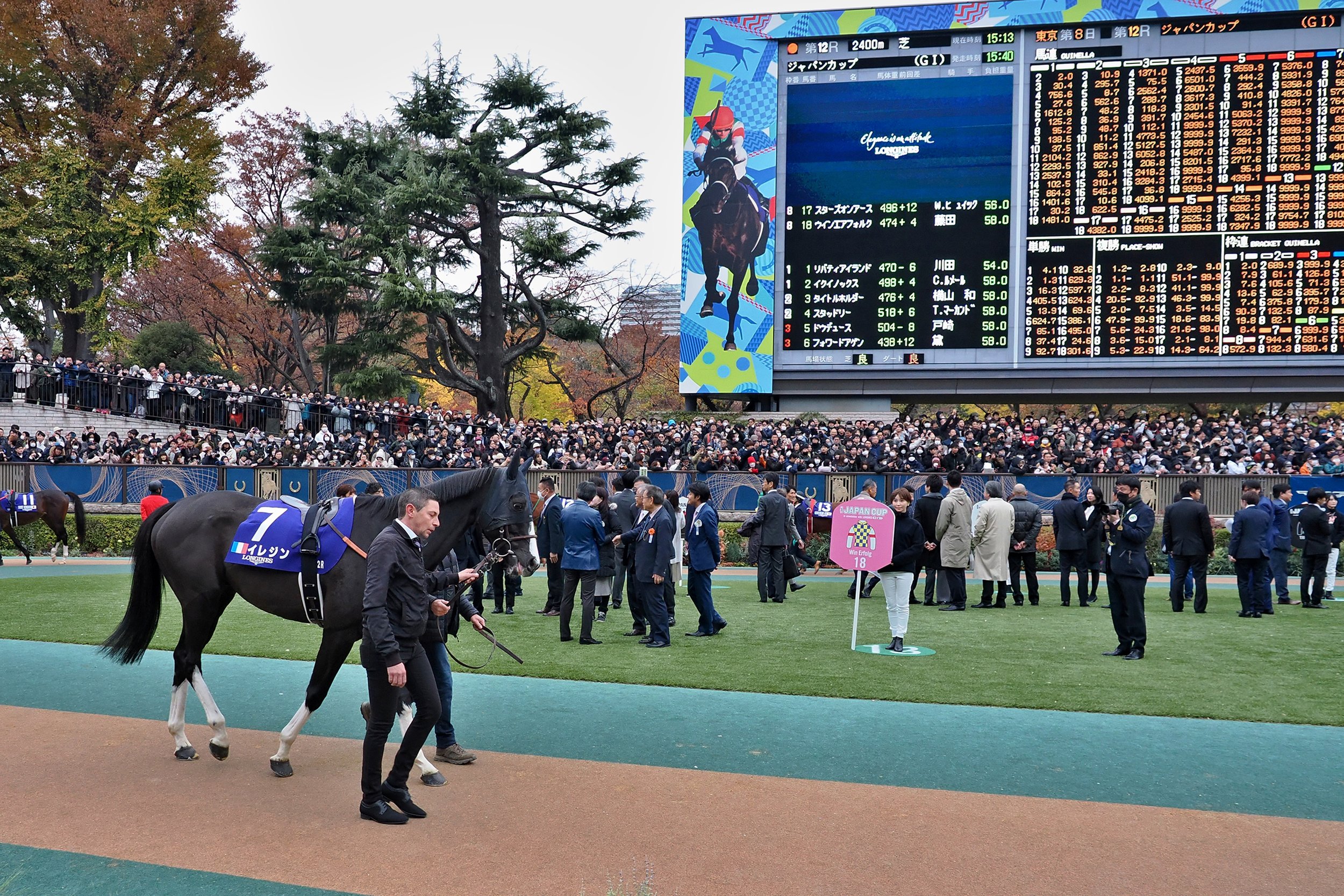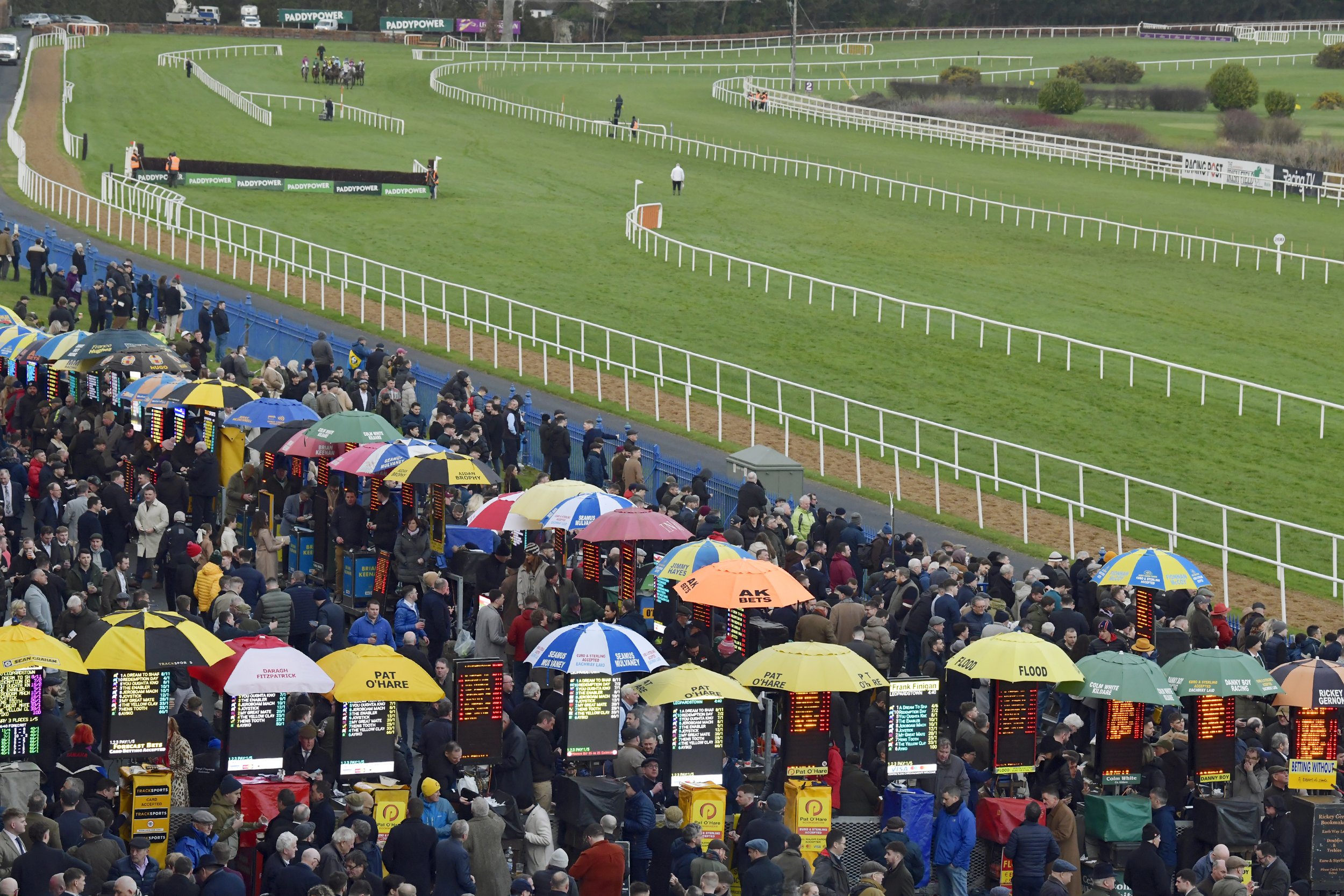What tweaks would you make to NH pattern races / calendar?
/Article by Daragh Ó Conchúir
Getting consensus in racing is much like finding the pot of gold at the end of the rainbow. So the changes to the Cheltenham Festival programme by The Jockey Club were lauded by many but criticised in plenty quarters too.
The press release announcing the six changes, headlined by the relegation of the Turners Chase from a Grade 1 to a Grade 2 novices’ handicap, said that they were made “with a focus on more competitive racing and a better experience and value for all”.
Everyone agrees with the focus. But Cheltenham is one meeting, THE meeting in terms of National Hunt racing. But if there is an issue of lack of competitiveness and entertainment, piecemeal measures don’t cut it.
Speaking at the Asian Racing Conference in Sapporo on August 28, BHA chair, Joe Saumarez Smith said it was time to stop thinking in the short term in a bid to reverse fortunes.
At the same conference, Hong Kong Jockey Club CEO Winfried Englebrecht-Bresges opined that fragmentation was a problem in British racing. It isn’t solely a British problem, given the number of interest groups, but it is made more acute by the lack of central control on a calendar and racing programme.
There is an African proverb that says, ‘If you want to go fast, go alone. If you want to go far, go together.’ Unity is required to push past short-term goals in pursuit of the long-term future. Some would argue that given the niche element of national hunt racing, this unity of approach should extend across Ireland, Britain and even France as the three are interlinked in terms of competition and trade.
Some amendments have been made to the NH programmes in Britain and Ireland in the last year or so, in a bid to address the dilution of the value of graded form. Bigwigs from Horse Racing Ireland and the British Horseracing Association met towards the end of September for a think-tank to discuss numerous issues of shared interest. A discussion on working together in relation to the programme was among the topics but a broad chat was all that occurred.
Meanwhile, I spoke to a variety of stakeholders on where jump racing is going, what it needs and what it doesn’t, and got some interesting responses.
Emma Lavelle (Trainer: Britain)
A former president of the National Trainers’ Federation, best known for guiding the spectacular career of 2019 Stayers’ Hurdle winner Paisley Park, Emma Lavelle has been concerned about the dilution of the product offered by British jump racing for a few years now.
Lavelle offers a cogent and clear argument for change. What is remarkable, in her view, is that while there is too much racing, the programme swelled while still not catering for every tier of horse.
“Changes should be about trying to make racing more competitive at every level,” says the boss of Bonita Racing Stables.
“There's no doubt that uncompetitive racing doesn't make for interesting viewing, good betting medians. You will always have the odd uncompetitive race and sometimes, small fields are competitive and exciting, but uncompetitive racing is a turn-off, and it's a turn-off for the practitioners as well as the general public. So I think ultimately, we've got to do something to shake it up.”
Lavelle recounts that watching Frodon win the Ryanair Chase at Cheltenham, about 40 minutes before Paisley Park’s fairytale triumph in the Stayers, was as moving as it was exciting. Shishkin reeling in Energumene late on in a four-runner Clarence House Chase at Ascot three years later was on a similar level. That’s what needs to be encouraged.
Attempting to directly slow the growth and impact of NH’s major yards would be short-sighted she believes, punishing ambition and success.
“It’s just how the cookie crumbles,” as she describes the stunning resources now available to the likes of Willie Mulins. “But it’s why we need to find different ways of making sure that we can all be competitive.
“I do think that our race programme needs to become more aspirational from the bottom up. Finding a race for that 130, 140 rated horse is nigh on impossible. You’ve just got one race here and there. If you've got a horse that's rated 100 you can run it six times a week, and somehow that just doesn't seem right. We need to maybe force or encourage some lower-grade horses to compete in mid-tier races off lower weights as an incentive. Otherwise you’re racing to the bottom.”
The over-provision of lower-tier races applies at graded level in Britain too, apart from in the three-mile division she knows so well, when Paisley Park drew swords with the same opposition in the Long Distance, Long Walk, Cleeve and Stayers’ Hurdles to thrilling effect on an annual basis.
“The pattern of this country has been shaken up this year and a little bit last year to reflect that maybe it had just got a little bit big. Hopefully that will just help them make those races a bit more competitive. I do think that the fine-tuning and the slimming of it is an improvement, and I think that needs to happen in Ireland as well.
“The thing is, where do you send some of these horses if they miss some of the other races? And is it right that we're just turning everything into handicaps? You don’t want to take too many away, because otherwise, what's the point in trying to create a nice horse? So you’re getting the balance right and when you make changes, just seeing how they work.”
Giving alterations time to bed in and to determine their impact is critical, she feels, because there is no one silver bullet. Addressing some clear imbalances should be a starting point, however.
“We always talk about prize money. I If you're lucky enough to get a horse that's good enough to win mid-tier-and-up races. You deserve to be paid for that, and certainly to incentivise ownership, that’s important.
“We're always scared about really shaking up the programme. You look at the French system, a lot of their races are about how much prize money you've won up to a certain period or through a certain period. People are loath to try new things, and then you get a short run at it, because people don't really engage with it, so you don't get the runners, so the racecourses don't want those changes.”
The Wiltshire-based conditioner believes that a co-operative approach between the jurisdictions would benefit but doesn’t believe pursuing a uniform pattern is practical, at this juncture at least, with so much to be addressed on home territory first.
“It would make perfect sense if there was a centralised system of ratings, rather than how it is at the minute, where the Irish will get more weight when they come over here, etc. I think things like that would make sense.
“But the problem is, it's hard enough to get everybody in this country on the same page – and when I say get everyone on the same page, I mean where everybody is coming at it without self-interest, but for the good of the sport. So to think that you're then trying to join up with Ireland or other countries, I just don't know how that could happen. It would be wonderful if it did, but it would take some negotiating.”
If there is one factor, over any other, preventing the level of change Lavelle feels is required in Britain, it is the lack of central control of fixtures and programming.
“It's so frustrating. Sometimes you just feel, ’Why can't people take a step back and take their own interest out of it and look at the bigger picture?’ ”
Peter Molony (Breeder/Trader/Sales Agent/Racing Manager: Ireland)
Peter Molony is involved in the industry from the start of the process as a breeder, right through to the destination point, as racing manager for Kenny Alexander, owner of the history-making four-time Cheltenham Festival victor and dual Champion Hurdle-winning mare, Honeysuckle, and on the flat side, Qatar Racing’s Irish representative.
The Rathmore Stud manager is an ardent supporter of the ramped up NH mares’ programme in Britain and Ireland in the past decade, which has had such a monumentally positive impact on the demand for fillies at sales and their participation in jump racing.
Molony reckons the mares’ programme could be used as a test case for the creation of a broader uniform jump racing pattern in the jurisdictions. And if it worked, you would have a template to implement a programme on a universal level.
“What we have has been a huge improvement, and it's added massively to the overall racing experience, the market, in every way,” says Moloney of the mares’ programme. “But it's kind of grown up in a sort of higgledy, piggledy, sort of way, with a listed race added here, and a listed race added there, and not the greatest natural progression.
“At times you’d be wondering where the next race is if you wanted to stick solely to the fillies’ programme. So, I've suggested many times that the Irish and British authorities should sit down together and hammer out a proper pattern for them. And to be honest, it would make a lot of sense if they did it on a wider scale. But they could start with the fillies and mares, see how that works, and then go from there.”
As a breeder and trader who has produced the likes of former Gold Cup winner Bobs Worth and dual Cheltenham Grade 1 winner Sir Gerhard, and a NH agent with Goffs, the importance of the pattern is not lost on him. Nor is the erosion of the value of the exalted black type.
“If it was set up properly and got established, I think one pattern would add huge value to everything. And if you started with the fillies, it adds value to their form as well as to the overall enjoyment of the racing fan, of the overall racing product.
“You don’t want too many easy options, giving horses the chance to avoid one another all the time. The mares’ programme has been attacked in the past, and this continues to be attacked, that it's taking away from competitiveness. My argument is that it is actually adding competitiveness, because it's adding a whole new group of horses into the pool that wouldn't be racing at all.”
There were three distaff winners of the Cheltenham Champion Hurdle before 2016. Annie Power, Epatante and Honeysuckle have doubled that tally in the blink of an eye.
“Before the mares’ programme, the market didn’t exist. So you’d have none of those French mares. If you had a nicely-bred NH mare in Ireland, you just covered her. The racing mares are an exception. So the programme works but for it to be one programme would help it more.
“And then if that worked, bring it into the entire jump programme. In the flat game, people see progressions from your trials, into your Classics, and then into your later, all-age races with the clashes of the generations. People can see the progression, and that's great. It works well. It's easier to sell. I think if you had that in the national hunt game, it would be wonderful.
Willie Mullins (Trainer: Ireland)
There isn’t a sport in the world where sustained success isn’t at some point presented as a negative for the health of the sport. It must be tough to take even if criticism tends to be of a system rather than the winners’ magnificence.
He was crowned champion trainer in Ireland for a 17th straight year last season and became the first trainer since Vincent O’Brien 70 years previously to secure British honours. For context, Aidan O’Brien is on 26 consecutive native titles at the end of 2024 and a seventh British crown.
Mullins, an ex-chairman of the Irish Racehorse Trainers’ Association, believes that there are plenty of opportunities through the levels in Ireland, pointing to the growth of Gavin Cromwell’s operation as just one sample. He doesn’t see a need for a standardised programme between countries.
“I think people should be very careful when they start messing around with the programme,” says Mullins. “When you do little tweaks with the programme, you don't realise the consequences that will have somewhere else. So that's a great legacy that (former HRI chief executive) Brian Kavanagh and Jason Morris (former director of racing, now director of strategy) gave to Irish racing, and we should cherish it.
“A few of us go to France. The French never come over here. Prize money isn't good enough for them. Our seasons are just slightly different as well. But I think the story about Irish and English jump racing is probably Ireland versus England. And for that to take place, you have to have an English pattern and an Irish pattern. And we're very lucky that we have a race meeting called Cheltenham, where it's nearly, for the want of a better word, a World Championships in our game and all roads lead to there and then to Aintree and to Punchestown.
“I think it's huge, the way it works at the moment. So if you want to break that up, I'm not sure it would be beneficial.
“I also look at how racing has been put together by racing people, and I've seen, especially in Britain, over the last few years, people coming in from other sports, putting their imprint on racing, and they're not racing people. They don't realise how it works. They're in our sport for five years, and then they disappear off somewhere else. Meanwhile, they leave a fractured sport, putting in ideas that just don't take off or don't work.
“Racing is about breeding the best to the best, and hopefully get the best and taking on one another. And that's essentially it. That’s the core of racing.”
He considers the introduction of a team concept such as the Shergar Cup and racing League on the flat as ludicrous and argues that more focus should be on other factors in improving race-day experience for those in attendance than the action.
“When you have 35 minutes between races, it’s too long. I mean in the flat, it’s awful but even in national hunt. If you have a horse running in the first, and don’t have another till the last, it’s a long day. There are only so many cups of tea you can drink as there’s nothing else to do. It has been very boring for the public. They should look at that.
“And when it comes to Cheltenham, it is just too expensive.”
Jonathan Garratt (Kelso MD: Britain)
Jonathan Garratt has overseen the growth of Kelso as a desired destination for jumps racing with an imaginative, ambitious approach to programming and prize money.
Last year, Garratt was scathing in his criticism of the BHA’s premierisation policy which planned to “declutter” Saturday racing in Britain, warning it could destroy the sport’s grassroots. It is a policy, Garratt tells us, that ignores the uniqueness of jump racing.
“Each of the three codes (if I can separate all-weather flat racing from turf) have very different opportunities and different threats,” Garratt declares. “And yet the BHA lumps them all together in the fixture process and has encouraged them to compete for a two-tier funding system which they’ve christened ‘core’ and ‘premier’.
“While it’s fairly easy to see an elite strand of racing on the flat, which exists on a global stage, jump racing is a much more integrated environment, where top-class horses develop over time, frequently competing at a grassroots level on their way to the top. The best horses might compete in point-to-points, or bumpers, or both. Many will take in a handicap or two, some in relatively modest company.
“Even during the recent Willie Mullins domination, we’d be hopeful of spotting a future Cheltenham Festival winner, or a Grand National winner, at a Kelso fixture which has been allocated the ‘core’ label.
“My opinion is that jump racing has a more nuanced and interesting narrative than flat racing and so we don’t need these false labels. We should be encouraging racegoers to follow the action at all tracks, and enjoy the progression as horses move through the developmental races and become seasoned performers – at whatever level they eventually attain.”
The purpose of all-weather racing is to provide a betting product in time slots that are not available to jump racing, Garratt argues. The story of jump racing is far deeper and a key asset he maintains.
“Each code has its own strengths. One of jump racing’s strongest is its unique ability to create fantastic, romantic stories. While it’s flattering that so many people have credited Kelso with developing the jumps’ programme through the changes we made to the Morebattle Hurdle, the truth is that we simply tapped into strengths that already existed in jump racing – we increased the value of a high quality race which was close in proximity to Cheltenham, made it a handicap to give more runners a chance, and added a £100,000 bonus to tie us into the existing Festival narrative. We were very fortunate when The Shunter won it in the first year!”
Garratt doesn’t think a centralised pattern for the chief NH countries would work but never one to knock a suggestion without offering another, he makes a different, radical proposal.
“One idea which I’d throw out there, instead, is a unified trainers’ championship. At the moment, the top British trainers will favour races in Britain over valuable opportunities elsewhere because they want to win their Championship. I assume it’s the same in Ireland and France. I might be wrong, but Willie’s bid for the British Championship appeared to be an afterthought, it came into the reckoning after he’d already enjoyed a great Cheltenham.
“If a European Trainers’ Championship had a really good prize and was supported by the media, trainers might consider running in races throughout all of the countries which were part of it. I’m not saying it would work – but if greater international cooperation was considered beneficial to the sport, this might be one way to move it forward.”
Louisa Carberry (Trainer: France)
Louisa Carberry is a native of England from an eventing background who is based in France ten years, where she met and married Philip Carberry, the Champion Hurdle winning jockey from the famed clan that became the first Irish jockey to win the Grand Steeple-Chase de Paris – the French Gold Cup - in 2006.
She became the first foreign woman to train the winner of the Grande Steepe in 2020. Docteur De Ballon backed up 12 months later and with Louisa saddling Gran Diose to a third victory in five seasons last May, she is now in exalted territory.
The programme and prize money make France the most desired place to train for her.
“We have a lot fewer handicap handicaps over here in jumping,” Carberry explains. “What we do have is very valuable handicaps. There was a 100 grand handicap hurdle yesterday and that happens a couple of times a week, and they’re usually for horses rated from 0-130 and they’re highly competitive races.
“It’s a quite nice way of doing it. It might start off with a race for horses that haven't run three times or been placed twice. And then you might step up to races for horses that haven't picked up €20,000 this year. And then you get a kilo for every five grand you won. So you can sort of just step up and up and up. And then when you hit a bar, you change discipline. You go chasing.
“What I like is it's a very clear pyramid system here. For example, for chasers, five-year-olds and over, there’s one Grade 1 in the spring and one in the autumn. And so I think that's nice so the Grade 1 winner is essentially, hopefully, the best horse.”
With fewer jumps horses in training in France, there isn’t a need for the quantity of racing that exists in Ireland and Britain, but ensuring the best are taking each other on and that Grade 1s are not pieces of work should always be the target.
“Otherwise, it loses its importance, doesn’t it? We should have that stepping stone system, into a listed race if they’re capable and so on. You should be taking in a handicap on the way up unless, of course, the horse is clearly so super-talented that you don’t need to.”
She has little time for complaints about the dominance of Mullins et al.
“Everyone started somewhere. It should be more, ‘How can I compete with them more or, do as well as them?,’ rather than complaining. It’s easy to say that, of course, when I’m not in there. But you find what works. There are trainers that their business is based on selling one or two horses a year and if the horse goes on and runs well, they’re thrilled. Whereas I’d rather win a Gold Cup! But each to their own. I’d also be thrilled if the horse sold well and it went on to run well.”
Does being so prosperous within a French system remove the ambition of aiming for a Cheltenham Gold Cup, for example? Or would a uniform pattern, or at least something similar, bring travelling to one of the other two countries into focus for French trainers?
“Definitely, and we have gone to England and Ireland a couple of times. Happy to do more and are likely to do more. It's got to be worthwhile, that you think there's nothing more valuable over here. So it probably comes down to prize money, but then at the same time, God, I’d love to win a really good race, even if it was worth less than something over here. But over here, we know where we are, we've got our mark, their horse is going to do well, and it's worth a lot of money.
“I wouldn’t be against running in a nice handicap at Cheltenham either, by the way. It doesn't have to be a Grade 1. But you don’t know the horses you’re taking on, you don’t know the track, the racing style and the money isn’t great. So do I stick to what I know?”
Carberry believes more French-based trainers are looking beyond their borders, however. Current King George VI Chase favourite, Il Est Français (Noel George and Amanda Zetterholm) and Gold Tweet (Gabriel Leenders) made a splash in Britain in 2023.
“I think it's important for us to show that we're keen and willing and able and capable of running them, but probably things like the season and the programme, a few little tweaks there might help. But that’s not something that’s going to happen overnight.”
Conclusion
This subheading may mislead. We have no definitive answers here. There is plenty of logic though and a few intriguing proposals – take a bow, Jonathan Garratt with the idea of a European Trainers’ Championship!
Emma Lavelle’s championing of bands of racing for the mid-tier horse, and suggestions around adopting the French method of framing races around prize money, so well-articulated by Louisa Carberry, certainly appears to have a sound basis.
A single rating mechanism seems straightforward. Less so, perhaps, a NH equivalent of the European Pattern Committee that regulates the programme for flat racing, to avoid clashes in different jurisdictions, set conditions and ensure standard control i.e. that low-performing races have their status reduced and those constantly performing have them increased if they are not already Grade 1s.
One British course clerk, speaking off the record, had no doubt about the need for an overhaul of the pattern in some way. Of the circa 140 graded races in the jurisdiction, using three-year parameters, 54 of them are not performing.
The pattern is supposed to be how we accurately measure achievement and status, with a variety of ways of eventually reaching whatever your ceiling. But if it is diluted and Grade 1s are thrown about like confetti, the entire product and system is devalued.
Vin Cox, Yulong representative in Australia has discussed it in terms of a similar debate Down Under, about how the black type is the internationally recognised language but that its integrity is compromised by just adding another one “willy-nilly” i.e. without following a set list of criteria.
Any thriving entity needs cohesion. We shall wait and see.






